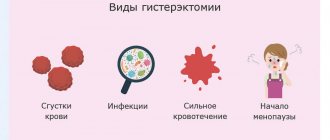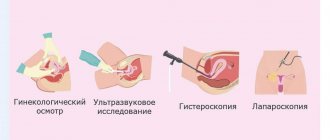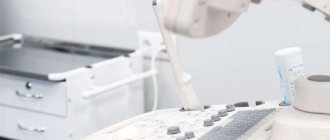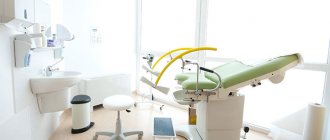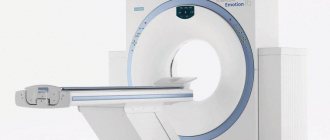Hernioplasty or hernia repair is the only radical method of getting rid of a hernia of any location - inguinal, umbilical, femoral, linea alba, postoperative. Laparoscopic (or endoscopic) hernioplasty is the least traumatic, safe and reliable way to get rid of a hernia. From an operation with a traditional wide incision (i.e. conventional hernioplasty) performed laparoscopically, there is a minimal number of complications - no more than 0.3%. The patient can leave the hospital on the second day, and complete recovery takes no more than one month, the possibility of relapse is significantly reduced (up to 4%).
Advantages of laparoscopic hernia surgery
Endoscopic hernioplasty is successfully used to treat abdominal hernias, demonstrating not only a high therapeutic result, but also absolute safety in cases where open surgery is contraindicated.
This operational tactic has a number of undeniable advantages:
- Minimal tissue trauma - the operation is performed through several small punctures, without the need for stitches.
- High effectiveness - the use of mesh implants closes the hernia defect, preventing the hernia from forming again when intra-abdominal pressure increases.
- The minimum recovery period is only 1 day in hospital, and complete recovery takes 6 weeks even for professional athletes.
At the Hernia Treatment Center at GMS Hospital, laparoscopic hernioplasty is performed by experienced endoscopist surgeons, whose high professionalism is confirmed by many successful similar operations.
Rehabilitation period
After the operation, the patient is transferred to a hospital ward. Almost immediately after the operation you can get up and move around independently. After surgery, mild nausea may occur. You can eat food after a few hours.
In the first few days, there may be slight pain at the site of the intervention. Painkillers are prescribed to relieve pain. There is no need for constant monitoring in the clinic, but each patient has 24-hour communication with the operating surgeon.
Recommendations in the postoperative period:
- It is necessary to regularly replace the sterile bandage at the puncture sites and treat the sutures with an antiseptic.
- You should temporarily avoid carbonated drinks and foods that cause increased gas formation in the intestines.
- You should not lift heavy objects for two weeks after laparoscopic surgery; for the next 3 months, limit the load (10 kg).
If redness, pain, or bleeding from the puncture sites occurs, you should consult a doctor.
If you follow all the doctor’s recommendations, you can count on a quick recovery after surgery to eliminate an inguinal or femoral hernia.
What do we treat
In the surgical department of GMS Hospital, laparoscopic hernioplasty is used to treat:
- Inguinal hernia
- Femoral hernia
- Hiatal hernia
- Umbilical hernias
- Spigelian line hernias
- Postoperative hernias
- Hernia of the white line of the abdomen
- Diastasis of the rectus abdominis muscles
Endoscopic hernia repair with mesh provides excellent cosmetic results, and the patient can return to normal life in just 2 weeks.
Western standards of treatment (evidence-based medicine)
Continuous staff development
Regular interaction with leading Russian and foreign medical institutions
Modern medical equipment and advanced diagnostic and treatment methods
Unified standard of service
We work around the clock 24/7/365
Why choose laparoscopic hernia removal?
It is believed that laparoscopic surgery is less traumatic than traditional interventions, both in the short and long term. This allows for a shorter hospital stay and patients can return to normal activities earlier than after traditional surgery. Laparoscopic removal leaves less noticeable scars. Disadvantages are that the procedure requires general anesthesia, as well as more equipment and supplies, which increases the cost of the procedure.
What symptoms to treat
Although there are many types of hernias, the main symptoms of the disease are the same for all of them. Clinical signs of pathology can occur spontaneously or develop gradually:
- The appearance of a protrusion in the femoral-inguinal fold, abdomen, scrotum.
- The protrusion increases with tension in the abdominal wall, and disappears or decreases at rest.
- The protrusion is accompanied by pain, a feeling of discomfort, and heaviness.
Any hernia is a time bomb. Regardless of its size, it can be pinched at any time, which will lead to stagnation of feces, intestinal obstruction, impaired circulation in the tissues of the internal organ, their death and the development of such deadly complications as peritonitis or general blood poisoning.
If you suffer from discomfort at the site of the protrusion of the hernia, you feel pain even when coughing and avoid any physical activity - be sure to consult a surgeon.
Features of treatment
The length of hospital stay depends on the size of the hernial protrusion and the type of surgical treatment and ranges from 1-2 days to 5-7 days if patient monitoring is necessary.
This operation does not require a special diet in the postoperative period.
Wearing a postoperative bandage for 2-3 months.
In the postoperative period, it is recommended to avoid excessive physical activity and heavy lifting.
Cost of treatment
Free treatment under compulsory medical insurance policy
A type of social insurance for citizens of the Russian Federation, which provides guarantees of free medical care in the detection of surgical diseases.
Quota treatment (VMP)
Providing medical care for the most severe diseases of the gastrointestinal tract, requiring the mandatory use of expensive instruments and/or the use of complex surgical techniques.
Treatment on a paid basis
It assumes the possibility of receiving medical care for any surgical disease, regardless of the presence of a compulsory medical insurance policy, without the need to complete additional documents and obtain a quota, for citizens of all countries of the world.
Diagnostics
To make a correct diagnosis and differentiate a hernia from diseases accompanied by similar symptoms, a thorough examination is necessary. Comprehensive diagnostics includes:
- Examination by a surgeon with palpation
- Coughing and straining tests
- Ultrasound of the hernial sac and its contents
- Survey radiography with barium passage
- Herniography
- Blood and urine tests
Depending on the indications, additional studies may be prescribed - irrigoscopy, cystoscopy, cystography, MSCT or MRI of the abdominal cavity, colonoscopy, etc.
Open hernioplasty according to Liechtenstein.
The operation can be performed both under general anesthesia and local infiltration anesthesia.
An incision in the skin and subcutaneous tissue is made 2 cm above and parallel to the inguinal fold.
The length of a standard incision is 5-8 cm, depending on the thickness of the subcutaneous tissue. The aponeurosis of the external oblique abdominal muscle is dissected along the fibers 2-3 cm above the inguinal ligament (Fig. 8).
After opening the inguinal canal, the aponeurosis of the external oblique muscle of the abdomen is peeled off from the internal oblique muscle up to the tendon part of the muscle, and down to the inguinal ligament.
Next, the spermatic cord is bluntly treated with a clamp and taken onto a soft holder. After this, the spermatic cord is carefully isolated from the surrounding tissues and the type of hernia is finally determined (Fig. 9).
Next, the hernial sac is isolated and separated from the surrounding tissues, which is opened, and the contents are inserted into the abdominal cavity. The bag is tied at the neck, its excess is cut off (Fig. 10).
This ends the mobilization stage and the actual reconstruction stage begins.
The reconstruction phase begins with mesh modeling. Synthetic mesh SurgiProMesh 8x13 cm (Covidien) is cut to fit the dimensions of the posterior wall of the inguinal canal. The mesh should cover the internal oblique muscle by at least 2-3 cm. An incision is made in the lateral part of the mesh and a hole is cut out for the spermatic cord (Fig. 11).
After this, the mesh is placed on the posterior wall of the inguinal canal, behind the spermatic cord. The first suture is to sew the mesh to the periosteum of the pubic bone. To suture the mesh, only polypropylene thread 2/0, 0 is used. We suture the mesh to the pubic bone with a U-shaped interrupted suture.
The implant is then sutured to the Pupart ligament. Starting from the medial edge of the ligament, we fix the mesh with a continuous suture or use an interrupted suture, going beyond the internal opening of the inguinal canal. After this, the mesh is fixed to the internal oblique muscle. Here we use an interrupted suture to avoid entrapment of the ilioinguinal nerve.
We try to hem the mesh as high as possible, where the internal oblique muscle has a tendon part. On the medial side, the implant should be fixed to the sheath of the rectus abdominis muscle. We usually use 3-4 knotted polypropylene seams. In this case, it is necessary to clearly see the ilioinguinal nerve and not damage it with the suture. The last step is stitching the mesh behind the spermatic cord. To do this, the “tails” of the mesh are fixed to each other behind the spermatic cord with one U-shaped seam so that the mesh opening allows only the cord to pass through and cannot subsequently expand (Fig. 12).
Then the wound is sutured layer by layer with a cosmetic suture applied to the skin.
Analyzing our own 20-year experience of surgical interventions performed for inguinal hernia, we came to the following conclusions.
Laparoscopic access in the treatment of inguinal hernias has undeniable advantages and allows simultaneous correction of inguinal hernias on both sides, as well as simultaneous correction of combined diseases of the abdominal cavity and pelvic organs (gastrointestinal tract disease, ovarian cyst, uterine fibroids, etc.). This access is certainly indicated for active people who want to quickly return to work with a minimum rehabilitation period.
The combined method of inguinal hernia correction has all the previous indications and is especially beneficial for large inguinal-scrotal hernias, in which the isolation of the hernial sac (due to its large size and adhesions with the spermatic cord) laparoscopically is more traumatic and is accompanied by a longer operation. In this situation, the release of the hernial sac through a 2 cm incision occurs quickly and bloodlessly, and further laparoscopic plastic surgery of the posterior wall of the inguinal canal with a mesh implant is performed in 10-15 minutes.
We use open Lichtenschnein hernioplasty, as a rule, in elderly patients or patients with severe concomitant diseases of the cardiovascular and respiratory systems. It is not advisable for these patients to undergo surgery under general anesthesia, in conditions of carboxyperitoneum and in the head down position. Lichtenstein hernioplasty can be performed under local or epidural anesthesia, which does not cause hemodynamic disturbances or respiratory dysfunction.
Surgical treatment of inguinal hernias of the abdominal wall is a very individual process. There cannot be one standard approach to treatment, so the choice of an open or laparoscopic method using mesh implants must be made only during a consultation when examining the patient.
After laparoscopic operations for the treatment of inguinal hernia, 3 incisions of 5 mm in length remain on the skin of the abdomen. From the first day after surgery for an umbilical and inguinal hernia, patients begin to get out of bed, drink and take liquid food, and from the third day they begin to eat normally. Discharge from the hospital occurs on the 1st or 2nd day, depending on the size and location of the hernia. The patient can begin work in 7-10 days.
In my practice, I began to use the latest generation of special weaving mesh, capable of being firmly fixed to the tissues of the abdominal wall on one side. When using such a mesh implant during ldaparoscopic hernioplasty, there is no need for additional fixation of the implant to the edges of the aponeurosis with titanium clips, which significantly reduces the intensity of postoperative pain and significantly improves the quality of life of patients in the postoperative period.
Preparing for surgery
Standard preoperative preparation includes:
- Blood tests (general, biochemical, coagulation, hepatitis, HIV, syphilis, Rh factor).
- Urine tests (general, biochemical).
- Electrocardiogram (ECG).
- Fluorogram or x-ray of the lungs.
- Consultation with an anesthesiologist and therapist.
A comprehensive examination makes it possible to obtain information about the state of health and exclude or confirm possible contraindications to surgery. All examinations can be completed in our Center in one day.
Why do you need to have surgery?
The formation of a hernia is associated with a weakening of the peritoneal wall or the presence of a congenital defect in it. Conservative therapy, traditional methods of treatment or wearing a bandage cannot eliminate the cause of the formation of a hernial protrusion. Only surgery can cope with such a problem. Regardless of the type of hernia, the only way to get rid of it forever is hernioplasty.
When choosing tactics for treating hernias, our Center’s surgeons give preference to gentle, minimally invasive endoscopic techniques. Laparoscopic tension-free hernioplasty has the following advantages:
- Coagulation of blood vessels simultaneously with the removal of damaged tissue, the possibility of bleeding.
- Exceptional precision of impact avoids injury to healthy surrounding tissues.
- Minimum recovery period.
Our doctors harmoniously combine modern methods with a classical surgical approach, which guarantees a high therapeutic result.
How is laparoscopic hernioplasty performed?
Laparoscopic tension-free hernioplasty is the latest method of hernia repair, with minimal trauma to the abdominal tissue.
The surgeon makes three to four punctures (no more than 1 cm in diameter) in the anterior abdominal wall, through which he inserts microsurgical instruments equipped with optics. The camera transmits a multiply enlarged image to the monitor, ensuring precise precision of each instrument movement. The doctor moves parts of the internal organs located in the hernial sac, returning them to their normal position. The next stage is closing the hernial orifice with a mesh implant, which is fixed with a special herniostapler, preventing the endoprosthesis from moving.
Laparoscopic tension-free hernioplasty is performed under general anesthesia. The latest generation endoscopic equipment allows you to make precise cuts of any depth. Removal of the hernial sac and damaged tissue takes a few minutes, after which the area of the hernial orifice is closed with a surgical mesh. For large hernias, a combination of open hernioplasty (at the stage of isolation and excision of the hernial sac) and endoscopic installation of a surgical mesh is possible.
A characteristic feature of laparoscopic hernioplasty is the almost complete absence of postoperative pain and the fastest healing of tissues, which makes this technique one of the most effective in the practice of treating hernias.
Types of hernioplasty
Hernia repair can be performed in various ways depending on the type of abdominal wall tissue repair:
- Autoplasty. In this case, the patient's own tissue is used.
- Alloplasty. In this case, donor tissue or synthetic materials (prostheses and meshes) are used.
- Combined option. In this case, hernioplasty using patient tissue and synthetic materials is used to remove the hernia.
The optimal approach in each case is chosen by doctors, taking into account the individual characteristics of the client’s body.
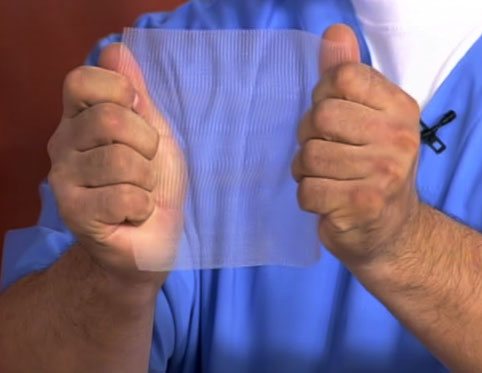
Herniotomy can be performed with or without tension on the adjacent tissues. The last method is by far the most promising. It involves performing hernioplasty using a self-absorbing mesh made of composite materials. This method can be used with hernias, regardless of where they are located. Its use provides a lower chance of relapse, since it does not involve additional stress on the body’s tissues. In addition, the mesh is more effective than the loose and thin connective tissue that forms in the tension zone.
Features of the rehabilitation period
After the operation, you will be placed in a comfortable room under the supervision of specialists. In the early postoperative period, mild abdominal pain and slight swelling in the intervention area may be observed. Such sensations are completely normal and do not require additional treatment. Within 24 hours you will be discharged home.
After the operation, we regularly monitor the patient. Postoperative examinations allow you to monitor all stages of the healing process and restoration of the body. There are no scars, pain or relapse of the disease - laparoscopic tension-free hernioplasty does not require a long stay in the hospital, and full recovery takes about 6 weeks. During this period it is not recommended:
- Lift weights.
- Visit baths, swimming pools, saunas, ponds.
- Engage in active sports.
You must carefully follow your doctor's recommendations regarding nutrition and wearing a bandage (if necessary). The use of the latest endoscopic technologies makes it possible to significantly shorten the rehabilitation period and quickly return to active life. GMS Hospital surgeons have performed thousands of successfully performed hernia repair operations using mesh implants, so when you turn to our surgical center for help, you can be completely confident in the result. You can make an appointment with a doctor by phone or by filling out the online form on the website.
Advantages and disadvantages of the operation
Before undergoing surgery, you should learn about the pros and cons of the procedure. Advantages of laparoscopic inguinal hernia repair:
- Carrying out a diagnostic examination of the abdominal cavity during laparoscopy, sometimes revealing a hernia on the opposite side that does not manifest itself clinically.
- During surgical treatment, there is no tissue tension in the plastic area. This significantly reduces the likelihood of hernia recurrence.
- Small cosmetic stitches at the puncture sites. In a conventional surgical operation to remove a hernial protrusion, an incision up to 10 cm long is made. When removing an inguinal hernia by laparoscopy, three incisions are made, the largest of which does not exceed 2 cm in length.
- Fast recovery period. After a herniotomy operation, there is no need for a long stay in a hospital, the pain syndrome is minimal and most often the patient is discharged home the next day after the operation
But there are also disadvantages:
- Higher price for laparoscopy of inguinal hernia;
- The operation is performed under general anesthesia (narcosis) and is accompanied by anesthetic risks.
- It is difficult to find a professional surgeon who is fluent in the technique of these operations.
